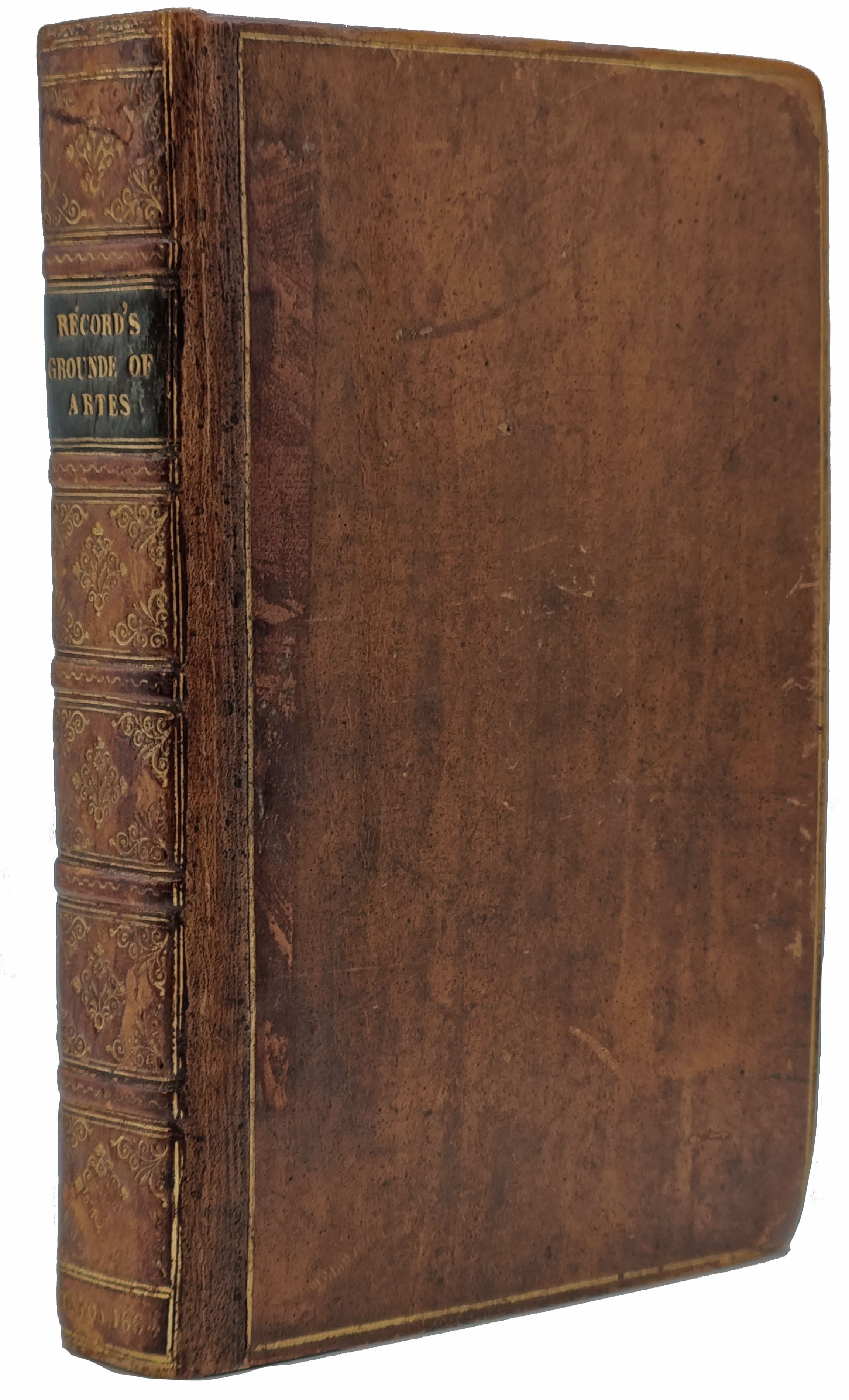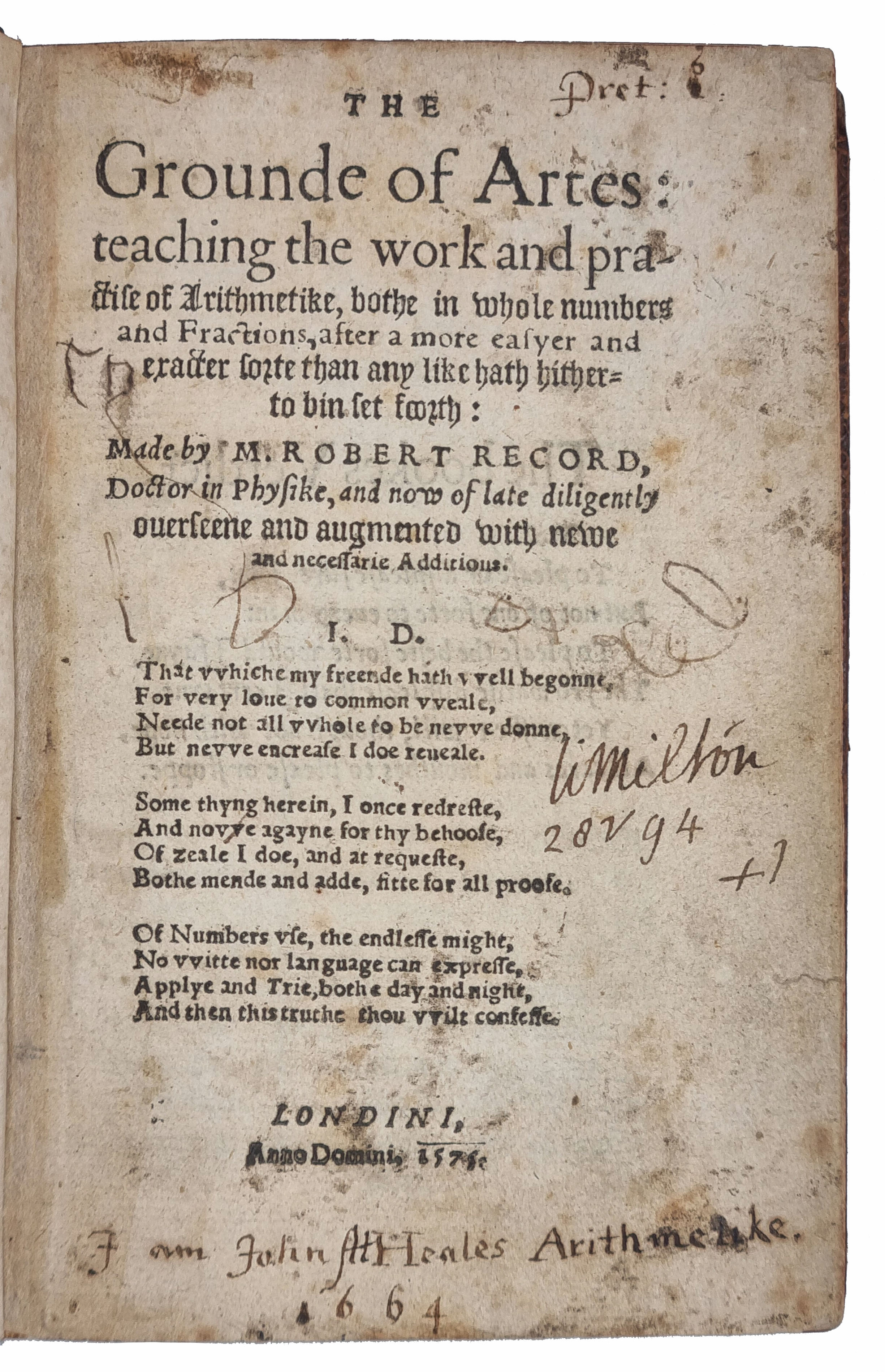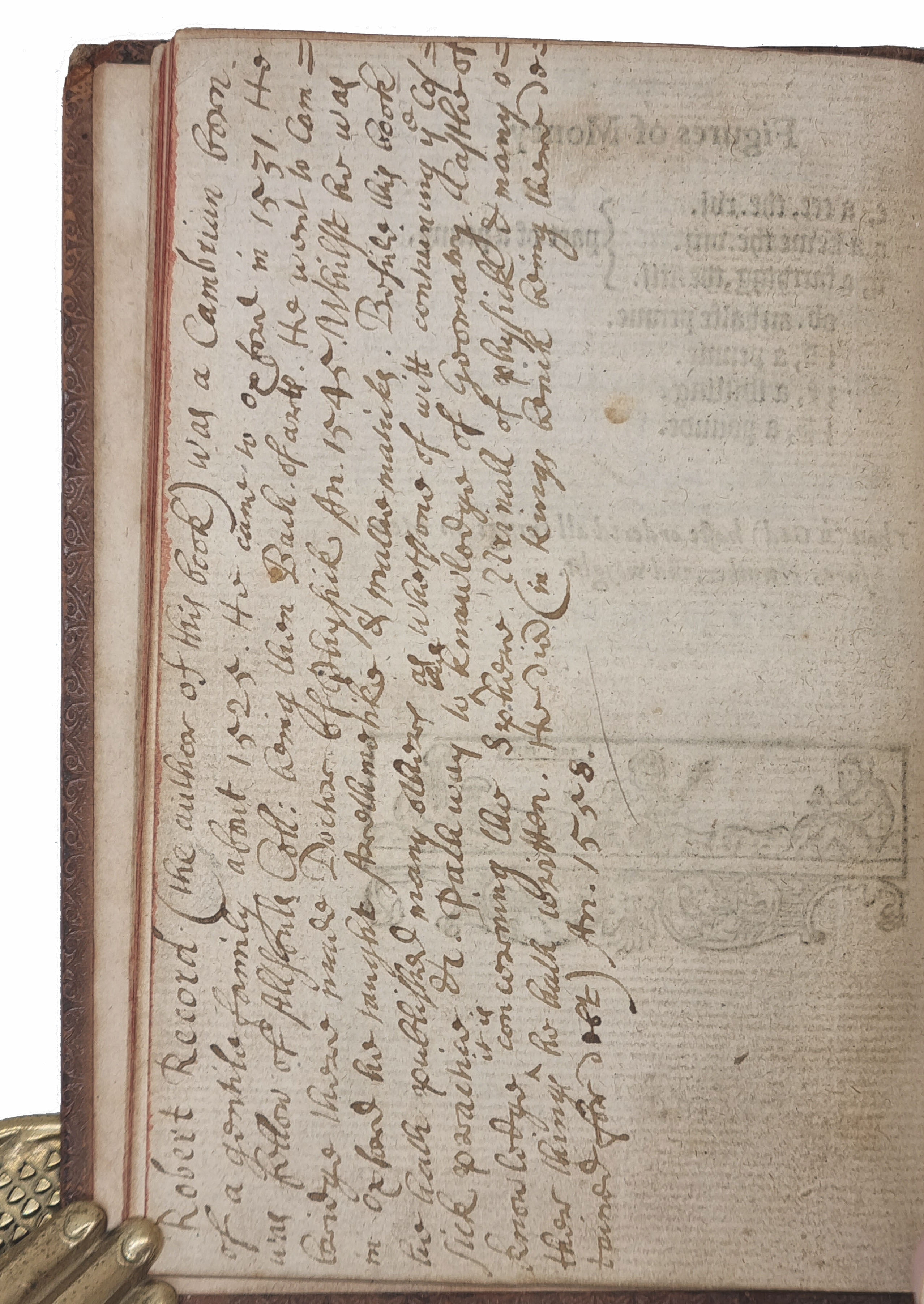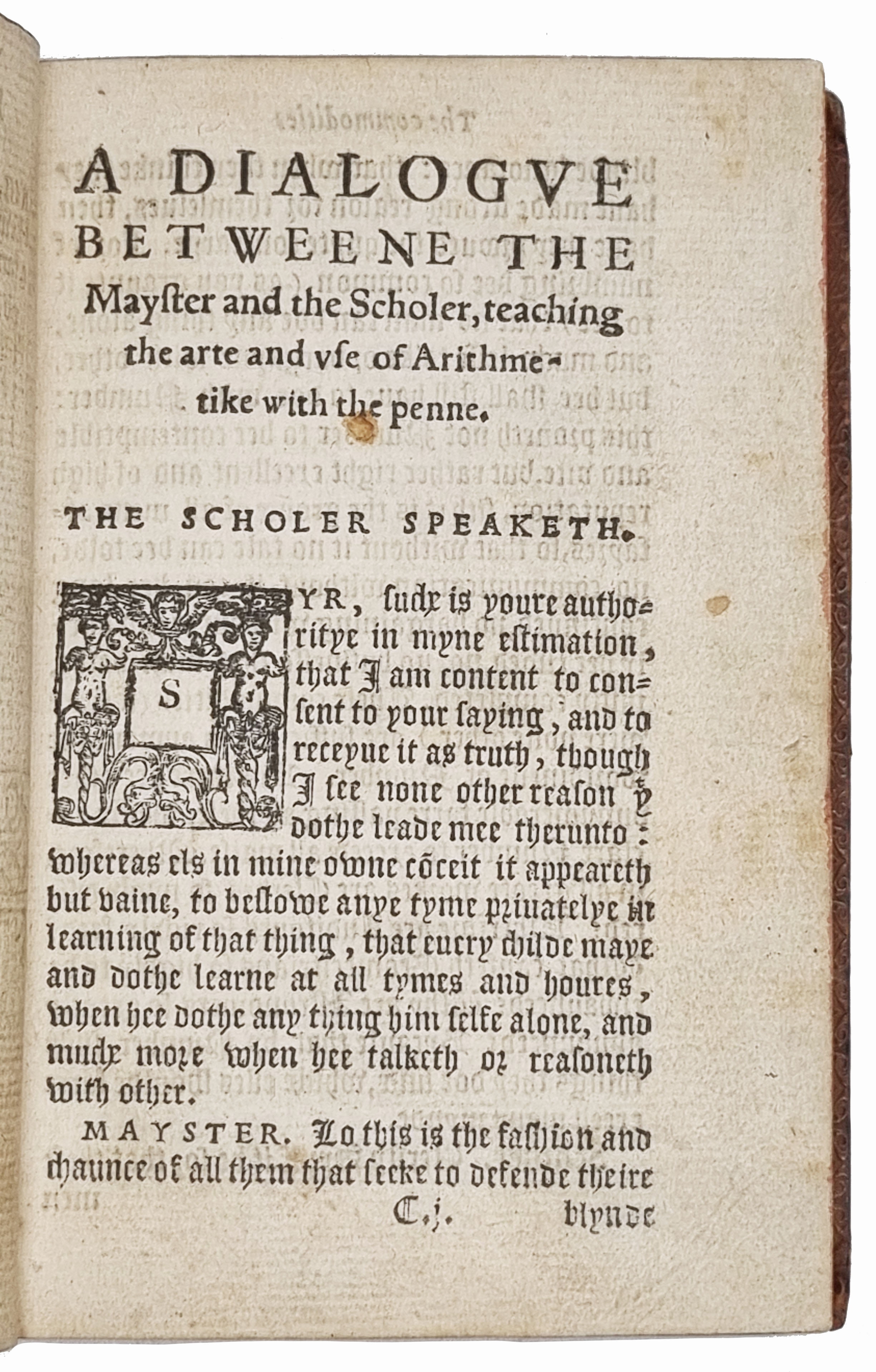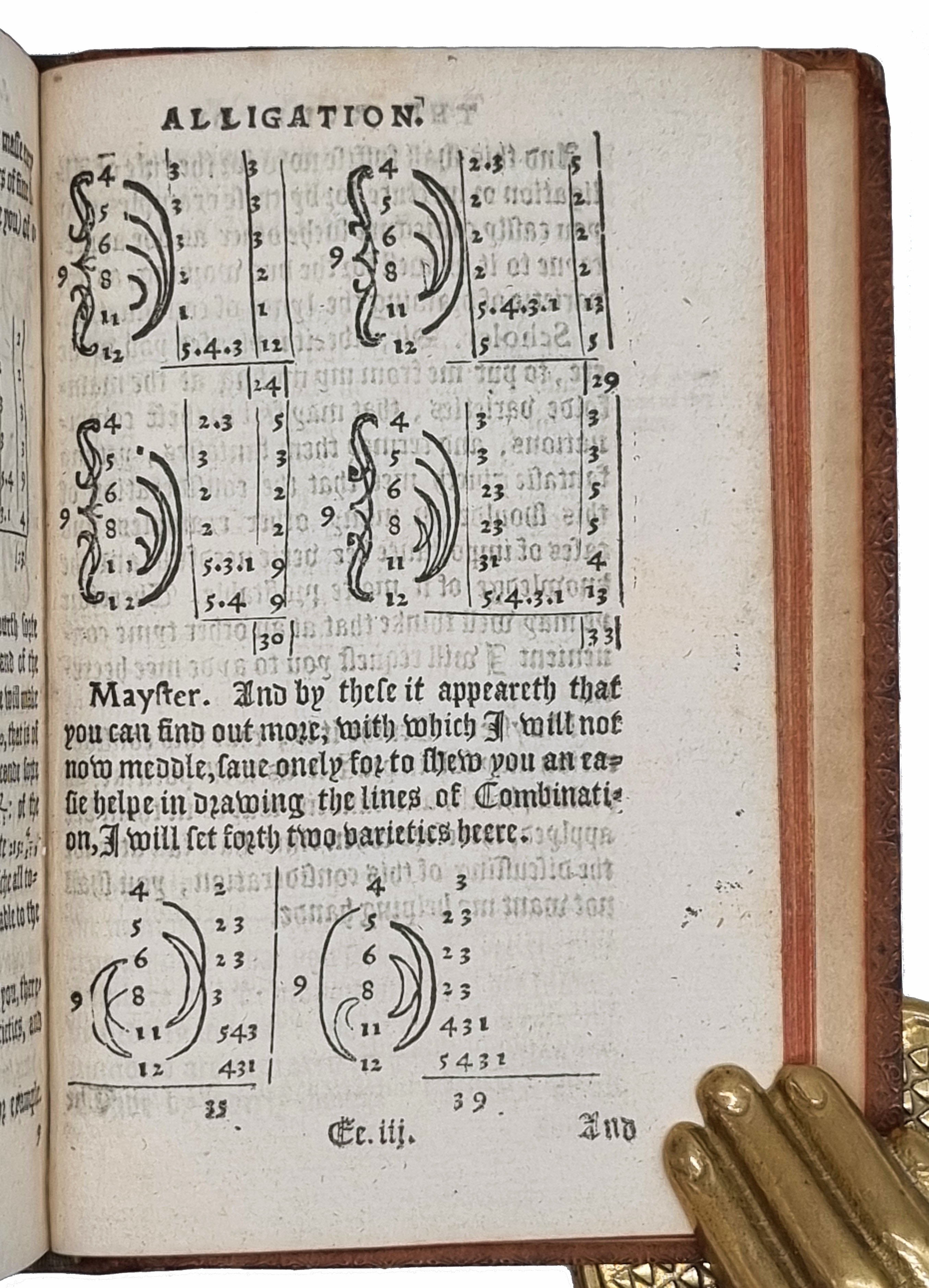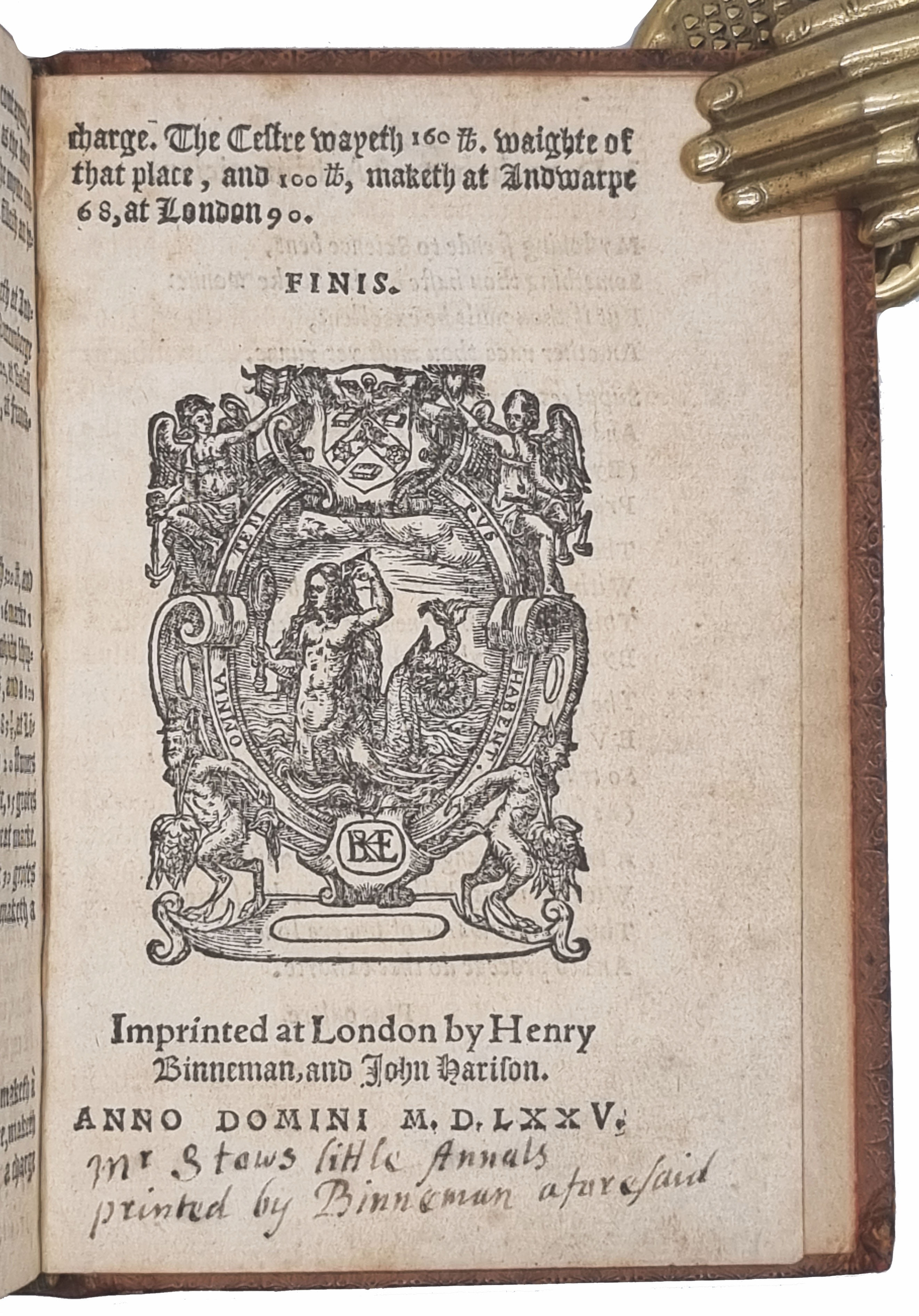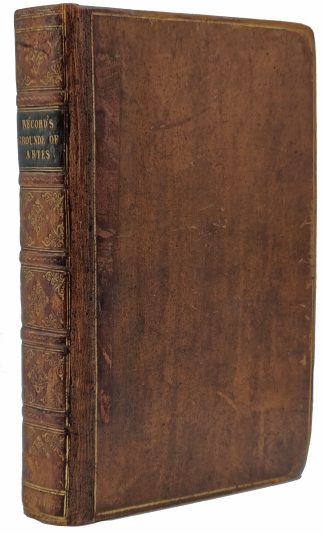RECORDE, Robert
The grounde of artes: teaching the work and practise of arithmetike
London, Henry Binneman and John Harison, 1575£24,000.00
8vo. ff. [251]. A-2H , 2I (-2I4). Black letter, some Italic and Roman. Historiated and grotesque woodcut initials, woodcut tailpieces, very numerous woodcut diagrams and tables in the text, several full page, including a full page table on the use of finger numerals, “I am John Heales Arithmetike 1664 , manuscript on at foot of title, “W. Milton” in an early hand above, price at head, 10 line manuscript biography of the author on blank B8v in an early hand, Erwin Tomash label on pastedown. Light age yellowing, title and verso of last leaf a little spotted and dusty, minor marginal spotting in places, the odd thumb mark or minor marginal stain. A very good copy, in early C19th calf, covers bordered with a single gilt rule, spine with gilt ruled raised bands richly gilt in compartments, green morocco title label gilt, expertly rebacked, original spine laid down, edges gilt, inner dentelle with blind roll, a.e.r. extremities a little rubbed.
Very rare early edition of this most important mathematical work of the sixteenth century in England, with Record’s dedication to King Edward, edited and augmented after the author’s death by John Dee. It was the standard arithmetic textbook of the period, passing through numerous editions until 1673, long after the work should have been obsolete. Dee’s contributions were of a practical nature, being sections on foreign exchange and on foreign weights and measures. Dee also added a long poem “I.D. to the earnest Arithmetician” in which he promoted his “Mathematical Praeface” to Billingsley’s English translation of Euclid (1570). Robert Recorde’s Arithmetic: or, The Ground of Arts was one of the first printed English textbooks on arithmetic and the most popular of its time. The first edition of 1543 was preceded only by two other anonymous mathematical texts in 1537 and 1539.
Robert Recorde was born in Wales and attended both Oxford and Cambridge. Little is known of his early life, but records show him graduating Oxford in 1531 and elected a Fellow of All Souls College shortly thereafter. He disappears until 1545, when he graduated in medicine from Cambridge. Early in his career, he seems to have been physician to King Edward VI and Queen Mary. Two years later he had moved to London, and by 1549 he had been given the job of comptroller of the Bristol Mint. He undertook a position supervising the mint’s silver mines in Ireland from 1551 to 1553. Evidently this enterprise was a failure in that the mines were unproductive and expenses high. By 1556, Recorde was attempting to reestablish himself in court life. Presumably because of circumstances in Ireland, he laid charges against the Earl of Pembroke. Doing this proved to be a strategic error because whatever the truth of the situation, Pembroke was a powerful nobleman. Recorde lost his case and in turn was sued for libel by Pembroke. Being unable to pay the judgment of £1,000 against him, he was put into the King’s Bench prison, where he died a year later. A summary of this sad tale was written by a former owner on a blank page just before the beginning of the text on arithmetic. Record is known to have published a number of textbooks on mathematical subjects and at least one on medicine. He is said, by others, to have had several more in manuscript that are now lost. He is most famous for his mathematical books and is usually considered as the founder of English mathematical writing. He was a scholar of Latin and Greek who attempted to find appropriate English terms for technical words in those languages. His books were always logically arranged, with the fundamental principles discussed before addressing more sophisticated questions. Recorde published his books in the order in which he considered their study to be most appropriate. First came The Ground of Artes, an arithmetic text, in 1543. The Pathway to Knowledge, a translation of the first four books of Euclid’s Elements, followed in 1551. The Castle of Knowledge, an astronomy text, introduced the Copernican system to English readers in 1556. Last in the sequence, The Whetstone of Witte was the second, more sophisticated part of his arithmetic and introduced the subject of algebra and equations in 1557. This volume, first published in 1543 and enlarged for the edition of 1552, was written in the form of a dialogue between master and pupil, proved to be very popular.. The work was transitional in nature and considers arithmetic using Hindu-Arabic notation as well as the table abacus. The first edition covered the basic operations and the conversion of money (i.e., reduction of pounds, shillings and pence into pence, etc.) and the rule of three (here called the golden rule). The later editions included discussion of fractions, the rule of false position and similar refinements. There is also a small section on the use of finger numerals.
Extremely rare.
ESTC S106509 (three copies only). STC 20801. Erwin Tomash Library R 43 (this copy).In stock


